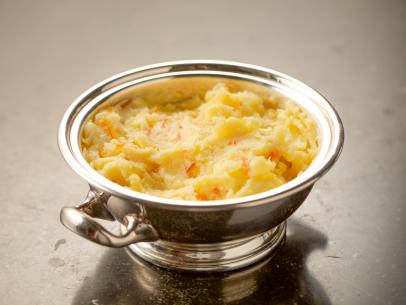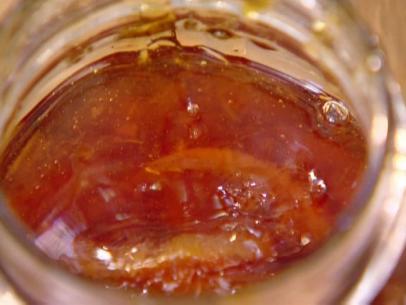
Classic Seville Orange Marmalade
- Level: Advanced
- Total: 2 hr
- Active: 1 hr
- Yield: About 4 cups or four 1/2-pint jars
-
- Nutritional Analysis
- Per Serving
- Serving Size
- 1 of 8 servings
- Calories
- 445
- Total Fat
- 0 g
- Saturated Fat
- 0 g
- Carbohydrates
- 115 g
- Dietary Fiber
- 2 g
- Sugar
- 113 g
- Protein
- 1 g
- Cholesterol
- 0 mg
- Sodium
- 119 mg
- Level: Advanced
- Total: 2 hr
- Active: 1 hr
- Yield: About 4 cups or four 1/2-pint jars
-
- Nutritional Analysis
- Per Serving
- Serving Size
- 1 of 8 servings
- Calories
- 445
- Total Fat
- 0 g
- Saturated Fat
- 0 g
- Carbohydrates
- 115 g
- Dietary Fiber
- 2 g
- Sugar
- 113 g
- Protein
- 1 g
- Cholesterol
- 0 mg
- Sodium
- 119 mg
Ingredients
Directions
Special equipment:
Cheesecloth, kitchen twine, boiling water canner with a rack, canning tongs, canning funnel, four 1/2-pint jars- Place a wire rack in a rimmed baking sheet or line it with a clean towel. Set aside. Place several small plates in the freezer to use later to test the consistency of the marmalade.
- Halve and juice the oranges. You should have about 2 cups. Place the juice in a large pot. Using your fingers, remove the membranes and seeds from the hollowed shells and tie them up in a piece of cheesecloth. Add the cheesecloth filled with the membranes and seeds to the pot containing the juice.
- Cut the peel of the oranges into matchsticks. Put the strips of peel into the pot with the juice and the cheesecloth containing the membrane and seeds. Pour over 4 cups water, or enough water so that the water and juice cover the strips of peel (it will depend on the size of your pot). Bring to a boil and then simmer gently until the peels are soft and tender, 45 to 60 minutes.
- Allow to cool until the bag of membranes and seeds is cool enough to squeeze, about 20 minutes (be careful, it will be hot!). (You can also cover it and leave the marmalade to sit in the refrigerator overnight.) Once cooled, squeeze the pectin-packed cheesecloth until “dry.” Discard. Add the sugar and salt and stir well until dissolved.
- Return the peels and liquid to the heat. Bring to a boil over high heat until the marmalade reaches the jelling point, 220 degrees F on an instant-read thermometer, 15 to 20 minutes. The peels will be shiny and glass-like. (If you don’t have a thermometer, you can also dribble a few drops of the marmalade on a frozen plate. If it crinkles when you run a finger through it and your finger leaves a clear line in the marmalade, it's ready. If not, check it every 5 minutes or so.)
- While the marmalade is cooking, place the canning rack in the canner and fill the pot with water; bring to a boil over high heat.
- Place 4 clean 1/2-pint jars (see Cook's Notes) on the prepared baking sheet. (This will help contain any dribbles or spills and prevent the jars from directly touching the metal.) For each jar, insert a canning funnel and carefully ladle in the marmalade, allowing at least 1/4 inch of headroom. Clean the rims of the jars with a clean, damp towel and tightly secure the lids.
- Using tongs, place the jars on the rack in the canner. The water should cover the jars by at least 1 inch. Cover the canner. Return the water to a boil and boil gently for 10 minutes. Using tongs, transfer the jars to a towel to cool. If the seal works and fits properly, the metal lid will be slightly concave within 24 hours of processing. Store the unopened jars of marmalade at room temperature for up to 1 year. Once the marmalade is opened, store in the refrigerator for up to 1 month.
Cook’s Note
High-acid foods such as fruits, pickles, sauerkraut, jams, jellies, marmalades and fruit butters with a pH level of 4.6 or lower can be preserved by boiling water canning (low-acid foods, such as canned meats and fish, require a pressure cooker). Boiling water canning makes use of a large pot that’s tall enough to fully submerge canning jars by at least an inch of water. The pot is used for both sterilization of jars prior to filling and for boiling the jars once they are filled. You don’t necessarily need to purchase a boiling water bath canner if you don’t already have one. Any large, deep stockpot equipped with a lid and a rack can double as a boiling water canner. Keep in mind: The pot must be large enough to fully surround and immerse the jars in water by 1 to 2 inches and allow for the water to boil rapidly with the lid on. It is not necessary to sterilize jars beforehand if processing jars in a boiling water canner for 10 minutes of longer. The jars should instead be freshly cleaned and well washed in hot soapy water. Any jars processed less than 10 minutes must be presterilized and the lids and rings placed into simmering, not boiling, water. Rings can be reused, but lids should be new and used only once for boiling water canning. Since fruit size and weight can vary, you may have some leftover marmalade that doesn’t fit in the jars to process. Simply store this in a clean jar in the fridge and use within a few days.


































